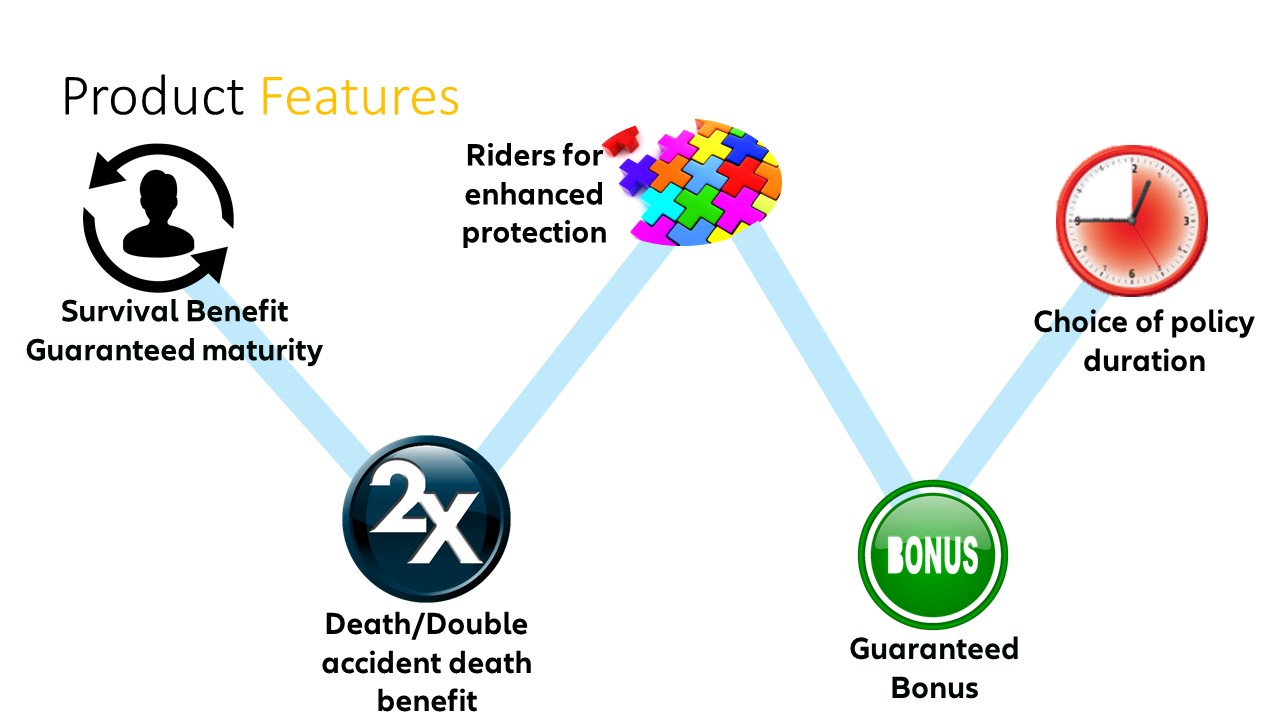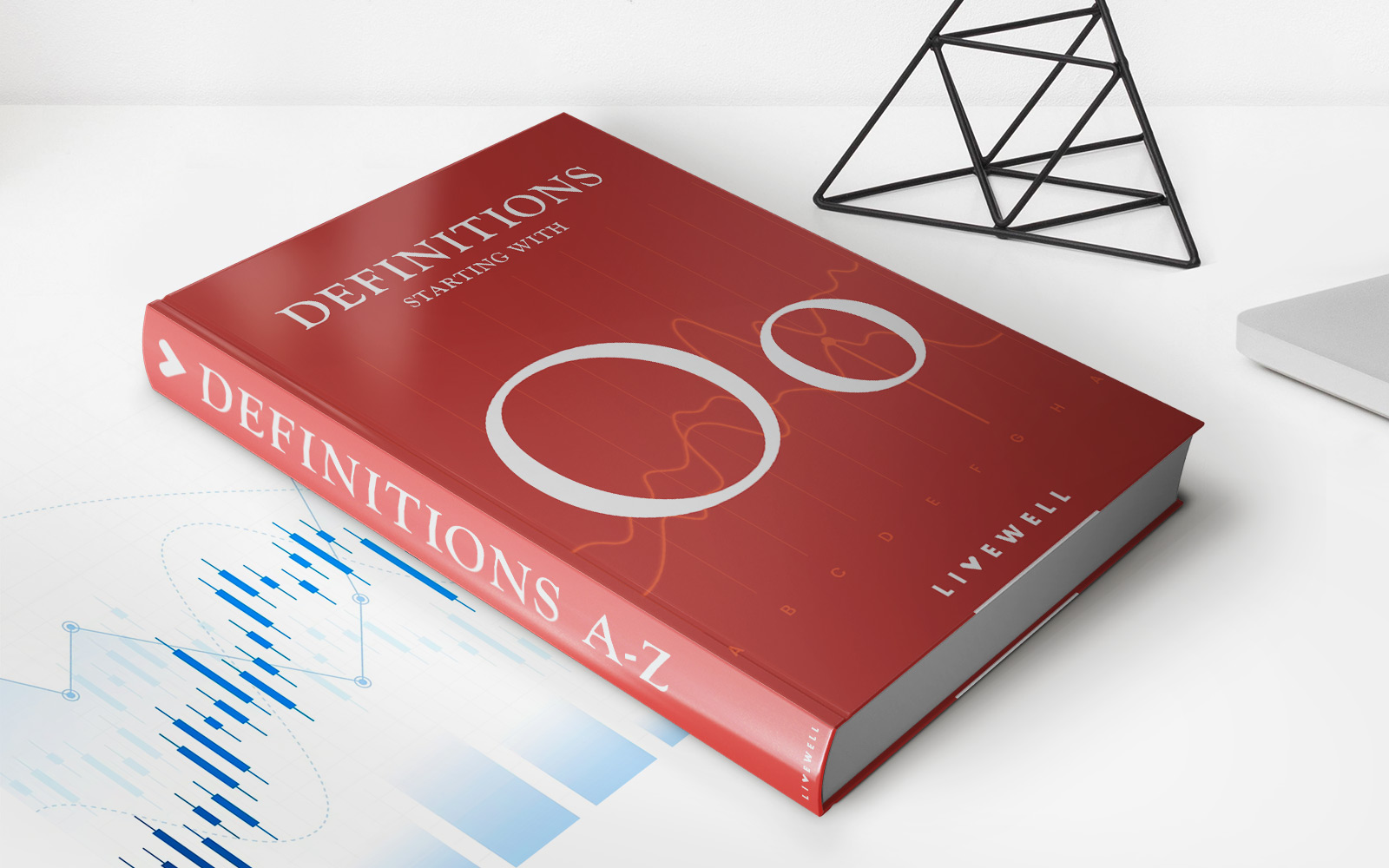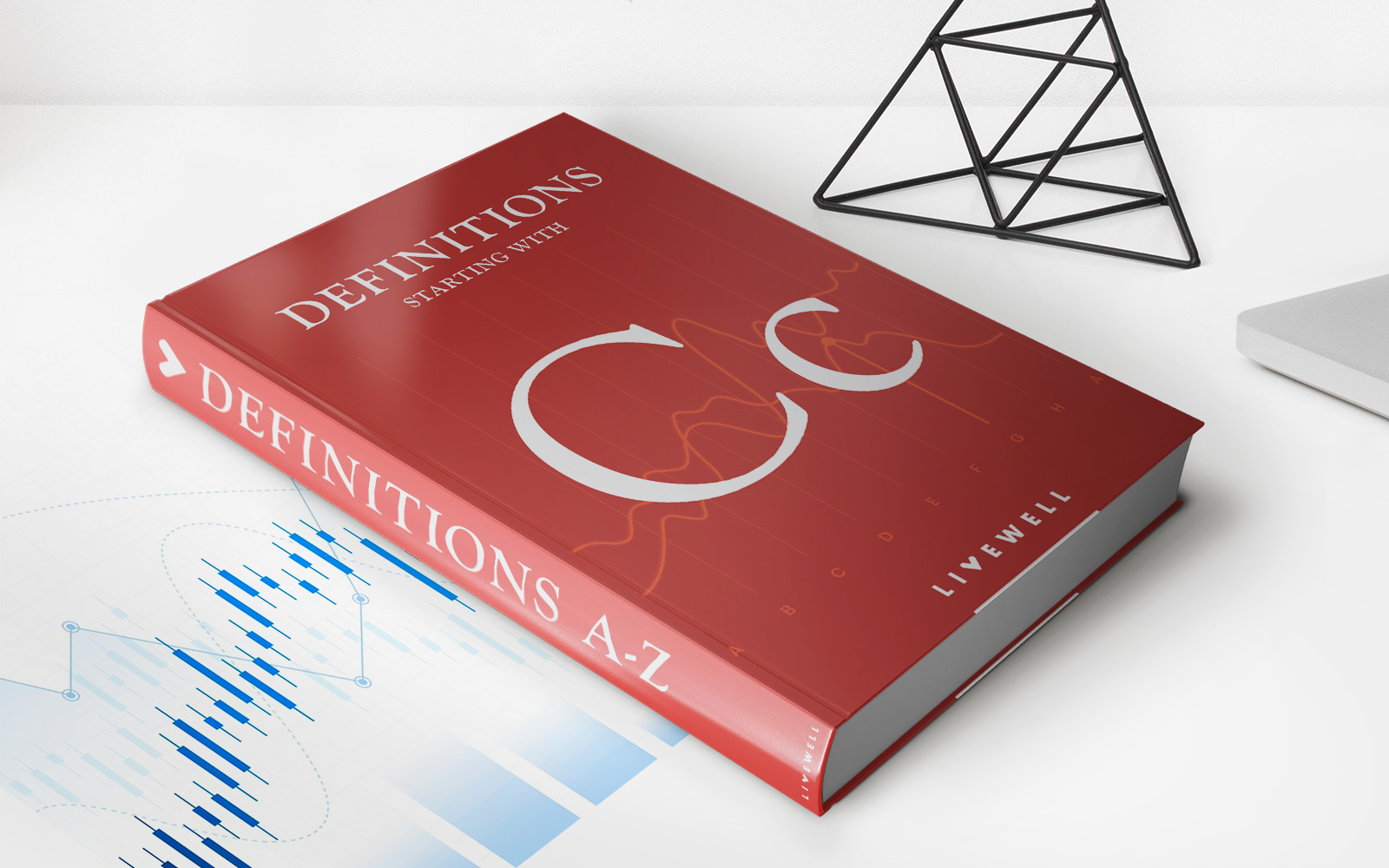

Finance
What Is A Split-Dollar Life Insurance Policy?
Published: October 16, 2023
Learn what a split-dollar life insurance policy is and how it can help with your financial planning. Find out more about this finance strategy now!
(Many of the links in this article redirect to a specific reviewed product. Your purchase of these products through affiliate links helps to generate commission for LiveWell, at no extra cost. Learn more)
Table of Contents
- Introduction
- What is a Split-Dollar Life Insurance Policy?
- How Does a Split-Dollar Life Insurance Policy Work?
- Types of Split-Dollar Life Insurance Policies
- Benefits of a Split-Dollar Life Insurance Policy
- Considerations and Potential Drawbacks
- Tax Implications of a Split-Dollar Life Insurance Policy
- Conclusion
Introduction
In the world of life insurance, there are various types of policies that cater to different needs and financial goals. One such policy that has gained popularity is the split-dollar life insurance policy. This unique policy offers a flexible and customizable approach to life insurance, making it an attractive option for individuals and businesses alike.
A split-dollar life insurance policy is a collaborative arrangement between two parties – typically an employer and an employee, or a wealthy individual and a family member. It combines elements of life insurance and long-term savings, providing a mutual benefit to both parties involved. Unlike traditional life insurance policies, which are often solely owned by the insured, split-dollar policies offer a shared ownership structure that allows for greater flexibility and unique planning strategies.
In this article, we will delve into the intricacies of split-dollar life insurance policies, exploring how they work, the various types available, the benefits they offer, and the potential considerations and drawbacks to be aware of. We will also touch upon the tax implications associated with these policies, as they can play a significant role in the overall financial impact.
Whether you are a business owner looking to provide an attractive benefits package to your key employees, or an individual seeking a tailored life insurance solution, understanding split-dollar life insurance policies is essential. So, let’s dive in and unravel the details of this intriguing life insurance option, shedding light on its potential advantages and considerations.
What is a Split-Dollar Life Insurance Policy?
A split-dollar life insurance policy is a unique arrangement between two parties, typically an employer and an employee, or a wealthy individual and a family member. It combines elements of life insurance and long-term savings, offering a mutual benefit to both parties involved. The policy’s name, “split-dollar,” refers to the way the costs and benefits of the policy are divided between the two parties.
Under a split-dollar life insurance policy, the two parties collaborate to pay the premiums, and the policy typically offers a death benefit to the insured’s beneficiaries upon their passing. The policy can be structured in various ways, allowing for flexibility and customization to meet the specific needs and objectives of both parties. It offers an alternative to traditional life insurance policies, which are often solely owned by the insured.
One of the key features of a split-dollar policy is the shared ownership structure. The employer or wealthy individual typically owns the policy, while the employee or family member is the insured. This shared ownership allows for greater control and flexibility in managing the policy and its benefits. It also allows for unique planning strategies, such as estate planning or business succession planning.
It’s important to note that a split-dollar life insurance policy is not limited to just one type of insurance. It can be applied to various forms of life insurance, including term life insurance, whole life insurance, or universal life insurance. The type of insurance selected will depend on the specific needs and goals of the parties involved.
In the next section, we will explore how a split-dollar life insurance policy works in practice, including its key components and mechanics.
How Does a Split-Dollar Life Insurance Policy Work?
A split-dollar life insurance policy operates through a collaborative effort between two parties, typically an employer and an employee, or a wealthy individual and a family member. Here’s a breakdown of the key components and mechanics of how a split-dollar policy works:
1. Ownership Structure: In a split-dollar policy, the employer or wealthy individual typically owns the policy, while the employee or family member is the insured. This shared ownership arrangement allows for greater flexibility and control in managing the policy.
2. Premium Payments: Both parties collaborate to pay the premiums of the policy. The premium payments can be structured in various ways, depending on the agreement between the parties. For example, the employer or wealthy individual may pay a larger portion of the premiums, while the employee or family member contributes a smaller amount.
3. Death Benefit: A split-dollar policy generally provides a death benefit that will be paid out to the insured’s beneficiaries upon their passing. The amount of the death benefit can be determined based on the needs and objectives of both parties.
4. Cash Value Accumulation: Depending on the type of life insurance used in the split-dollar policy, there may be a cash value component that accumulates over time. This cash value can serve as a source of tax-deferred savings or an asset that can be accessed during the insured’s lifetime.
5. Policy Termination and Distribution: When the split-dollar policy terminates, either due to the insured’s death or another predetermined event, the proceeds are distributed according to the terms of the policy. The distribution may include repayment of any outstanding loan or premiums paid by the employer or wealthy individual, with the remaining balance going to the insured’s beneficiaries.
It’s important to establish a written agreement between the parties involved to clearly outline the terms and conditions of the split-dollar policy. The agreement should address the responsibilities of each party, the premium payment structure, the policy’s ownership, and the distribution of proceeds upon termination.
In the next section, we will explore the different types of split-dollar life insurance policies to provide a comprehensive understanding of the options available.
Types of Split-Dollar Life Insurance Policies
Split-dollar life insurance policies come in various forms, allowing individuals and businesses to tailor their arrangements to specific needs and goals. Here are some of the common types of split-dollar life insurance policies:
1. Economic Benefit Split-Dollar: In an economic benefit split-dollar policy, the employer or wealthy individual pays the premiums and owns the policy. The employee or family member is the insured and receives the economic benefits associated with the policy, such as the cash value accumulation and the right to borrow against the policy’s cash value.
2. Loan Regime Split-Dollar: In a loan regime split-dollar policy, the employer or wealthy individual provides a loan to the employee or family member to assist in paying the premiums. The loan is typically secured by the cash value of the policy and accrues interest. Upon termination of the policy, the outstanding loan balance, including any accrued interest, is repaid to the employer or wealthy individual, and the remaining policy proceeds are distributed to the insured’s beneficiaries.
3. Equity Split-Dollar: An equity split-dollar policy involves the employer or wealthy individual and the employee or family member sharing in the policy’s equity value. The equity value is determined based on the cash value of the policy and any other applicable factors. The equity value split can be structured in various ways, such as a fixed percentage for each party or a predetermined formula based on certain events or milestones.
4. Reverse Split-Dollar: A reverse split-dollar policy reverses the traditional ownership structure. In this arrangement, the employee or family member owns the policy, while the employer or wealthy individual provides financial assistance to pay the premiums. The employer or wealthy individual may also be named as a primary beneficiary or have a collateral assignment interest in the policy.
It’s important to note that these are just a few examples of the types of split-dollar life insurance policies available. The structure and features of a split-dollar policy can be customized and tailored to meet the specific needs and objectives of the parties involved.
In the next section, we will delve into the benefits of a split-dollar life insurance policy, exploring the advantages it offers to both employers and employees or individuals and family members.
Benefits of a Split-Dollar Life Insurance Policy
A split-dollar life insurance policy offers a range of benefits to both employers and employees, or individuals and family members, making it an attractive option for those seeking a flexible and customizable life insurance solution. Here are some of the key benefits of a split-dollar policy:
1. Enhanced Death Benefit: Split-dollar policies provide a death benefit that is paid out to the insured’s beneficiaries upon their passing. This can offer financial security and support for loved ones, allowing them to maintain their lifestyle, cover expenses, or fulfill financial obligations.
2. Shared Premium Payments: With a split-dollar policy, the employer or wealthy individual collaborates with the employee or family member to pay the premiums. This shared payment structure can reduce the financial burden on the insured, making life insurance more affordable and accessible.
3. Tax-Advantaged Savings: Depending on the type of life insurance used in the split-dollar policy, there may be a cash value component that accumulates over time. This cash value can grow on a tax-deferred basis, allowing for potential tax advantages and the ability to access the accumulated savings in the future.
4. Estate Planning Opportunities: Split-dollar policies offer unique estate planning opportunities. For employers, it can be a strategy to transfer wealth to key employees or family members, helping to ensure a smooth business succession plan. For individuals, it can play a role in wealth transfer and preservation, allowing for efficient distribution of assets to beneficiaries.
5. Key Employee Retention: Employers can utilize split-dollar policies as an attractive benefit to retain and incentivize key employees. By offering a valuable life insurance solution, employers can enhance their employee benefits package and create a stronger bond between the company and its key talent.
6. Customization and Flexibility: Split-dollar policies can be structured and customized to meet the specific needs and objectives of the parties involved. This flexibility allows for tailoring the policy to fit unique circumstances, providing a personalized approach to life insurance planning.
It’s important to assess these benefits in the context of individual financial goals, tax considerations, and overall financial planning strategies. Consulting with a qualified financial advisor or insurance professional can provide valuable insights and guidance in determining if a split-dollar life insurance policy aligns with your specific needs and objectives.
In the next section, we will discuss some considerations and potential drawbacks of a split-dollar life insurance policy to provide a balanced view of this life insurance option.
Considerations and Potential Drawbacks
While a split-dollar life insurance policy offers many benefits, it’s important to be aware of the considerations and potential drawbacks before entering into such an arrangement. Here are some factors to keep in mind:
1. Complexity: Split-dollar policies can be complex and require careful planning and documentation. The policy’s structure, premium payments, ownership rights, and termination provisions should all be clearly defined in a written agreement to avoid confusion or disputes in the future.
2. Cost of Policy Termination: If a split-dollar policy is terminated before the insured’s death, there may be financial implications. For example, if the employer or wealthy individual has advanced premiums or provided loans, those amounts may need to be repaid with interest upon termination. This cost should be considered when evaluating the overall financial impact of the policy.
3. Tax Implications: Split-dollar policies can have tax implications for both the employer or wealthy individual and the employee or family member. Tax rules surrounding split-dollar policies can be complex and may vary depending on factors such as the type of policy, ownership structure, and premium payment arrangement. It’s crucial to consult with a tax advisor to fully understand the tax implications and plan accordingly.
4. Limited Flexibility: Once a split-dollar policy is established, there may be limited flexibility to make changes. The terms and conditions of the policy, including premium payments, ownership structure, and beneficiary designations, may be difficult to amend once agreed upon. It’s essential to carefully consider these factors and ensure they align with long-term goals and objectives.
5. Loss of Control: In certain types of split-dollar policies, such as the economic benefit split-dollar, the employee or family member may not have full control over the policy. The employer or wealthy individual may retain certain rights, such as the ability to access the policy’s cash value. This loss of control should be evaluated and considered in the overall decision-making process.
6. Alternative Options: Split-dollar policies are just one of many life insurance options available. It’s important to explore alternative solutions to determine if a split-dollar policy aligns with your specific needs and objectives. Traditional life insurance policies, such as term life insurance or whole life insurance, may offer simpler and more cost-effective alternatives depending on your circumstances.
Considering these factors and potential drawbacks can help you make an informed decision regarding a split-dollar life insurance policy. It’s recommended to consult with a financial advisor or insurance professional who can provide personalized guidance based on your individual situation.
In the next section, we will highlight the tax implications associated with split-dollar life insurance policies, as they play a significant role in the overall financial impact.
Tax Implications of a Split-Dollar Life Insurance Policy
When entering into a split-dollar life insurance policy, it’s important to understand the tax implications associated with such an arrangement. The tax treatment can vary depending on several factors, including the type of split-dollar policy, the ownership structure, and the premium payment arrangement. Here are some key considerations:
1. Economic Benefit Taxation: In an economic benefit split-dollar policy, the employee or family member is deemed to receive an economic benefit from the employer or wealthy individual. This economic benefit is typically calculated based on the cost of life insurance protection and the policy’s cash value accumulation. The employee or family member may be subject to income tax on this economic benefit each year.
2. Loan Regime Taxation: In a loan regime split-dollar policy, the tax treatment can differ. The employee or family member may not be subject to income tax on the economic benefit as long as the loan interest rates are at or above the applicable federal rate (AFR) set by the IRS. However, if the interest rates are below the AFR, there may be imputed interest that is taxable to the employee or family member.
3. Gift and Estate Tax Considerations: Split-dollar policies can have implications for gift and estate taxes, especially when the employer or wealthy individual provides financial assistance to the employee or family member. There may be gift tax consequences if the premiums paid by the employer exceed certain annual exclusion amounts. Additionally, the policy’s death benefit may be included in the insured’s estate for estate tax purposes.
4. Control and Incidents of Ownership: From a tax perspective, it’s important to consider who has control and incidents of ownership over the split-dollar policy. The IRS has specific regulations that determine whether the policy is included in the income or estate of the employer or wealthy individual, the employee or family member, or both. Understanding these rules will help navigate the tax implications of the split-dollar policy.
5. Reporting and Documentation: Proper reporting and documentation of the split-dollar arrangement are essential for tax compliance. Both parties should maintain detailed records of premium payments, loans, economic benefits, and any other financial transactions related to the policy. This documentation will be crucial for accurately reporting the tax consequences and ensuring compliance with tax laws.
Given the complexity and potential tax implications, it’s strongly recommended to consult with a tax advisor or CPA who specializes in life insurance planning and tax matters. They can provide personalized guidance based on your specific situation and help navigate the tax landscape associated with split-dollar life insurance policies.
Now that we’ve explored the tax implications, let’s conclude our discussion on split-dollar life insurance policies in the next section.
Conclusion
Split-dollar life insurance policies offer an innovative approach to life insurance planning, allowing for a shared ownership structure and collaboration between parties. They provide a range of benefits, including an enhanced death benefit, shared premium payments, tax advantages, estate planning opportunities, and key employee retention for businesses.
However, it’s important to consider the potential drawbacks and complexities associated with split-dollar policies, such as their tax implications, policy termination costs, limited flexibility, and loss of control. These factors should be carefully evaluated and weighed against the benefits to determine if a split-dollar policy aligns with your specific needs and objectives.
Working with a qualified financial advisor or insurance professional can provide valuable guidance and assist in navigating the intricacies of split-dollar life insurance policies. They can help assess your financial goals, evaluate alternative insurance options, and ensure tax compliance.
Remember, a split-dollar policy is just one tool in the broader landscape of life insurance planning. It’s essential to consider your unique circumstances, financial goals, and risk tolerance when determining the most suitable life insurance strategy for you or your business.
Ultimately, with the proper understanding and guidance, a split-dollar life insurance policy can be a valuable addition to your financial planning toolkit, providing a customized solution that addresses your specific objectives and priorities.
Thank you for taking the time to explore the intricacies of split-dollar life insurance policies. We hope this article has provided you with valuable insights and empowered you to make informed decisions regarding your life insurance needs.














